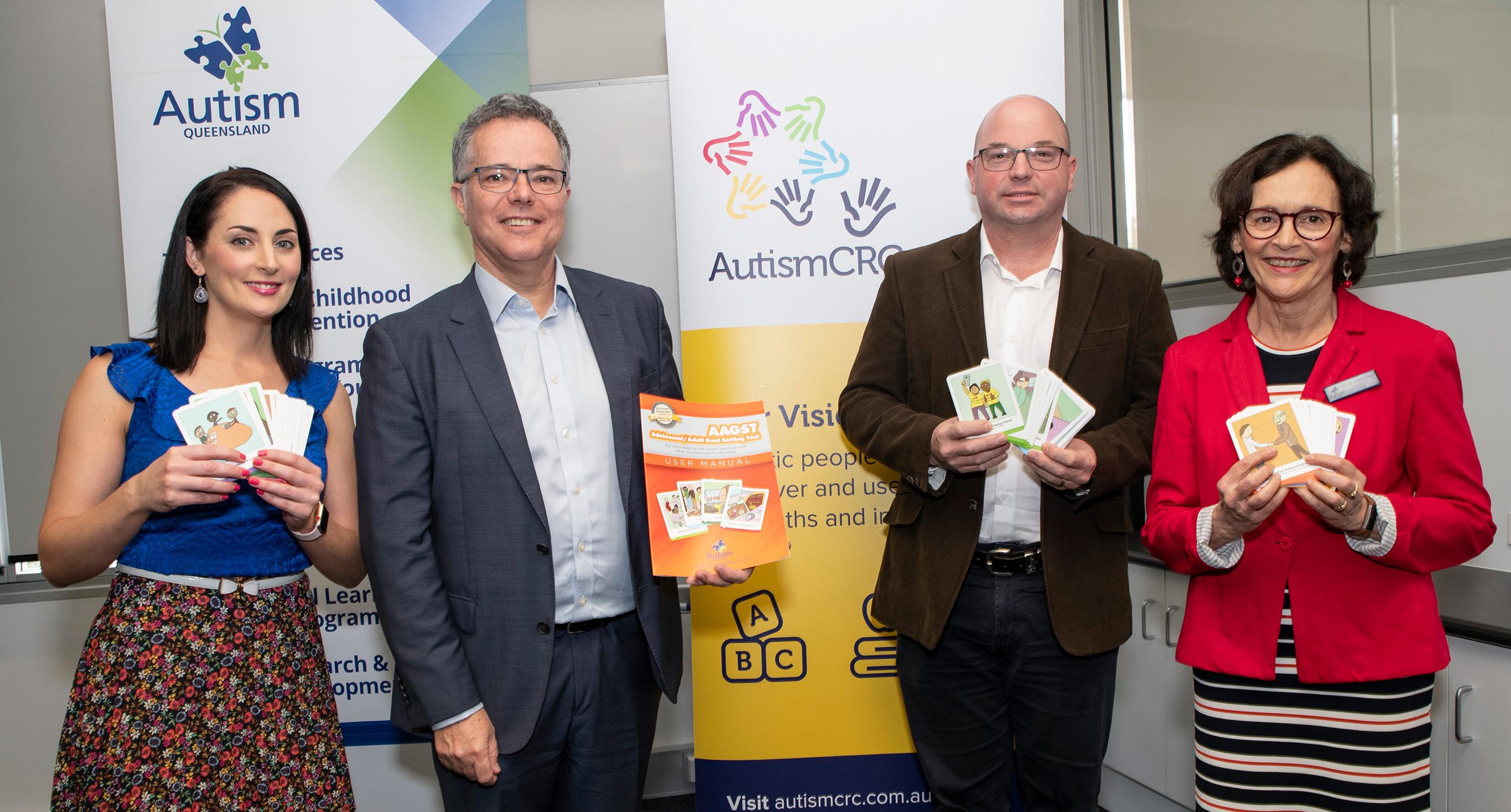"Yes - I want to work on this"
Pictures giving people on the autism spectrum a voice in planning their futures
Autism CRC and Autism Queensland have teamed up with students from the Studio G creative design program for young people on the autism spectrum to create a new illustrated Goal Setting Tool for Adolescents and Adults.
The tool was launched at the Autism Hub in October, at an event attended by 70+ allied health practitioners, parents, carers, service providers and researchers.
The Adolescent/Adult Goal Setting Tool (AAGST) provides a means of facilitating conversations about people’s goals and aspirations. It uses a card-sort process to circumvent the challenges that many people on the spectrum experience in articulating their wishes.
The illustrated goal cards are divided into nine categories:
- social relationships
- self-care and home living
- study and training
- employment
- health and fitness
- community access and participation
- communication
- finances
- emotional wellbeing.
The cards can be personalised and prioritised according to a person’s goals, and a planning sheet allows the user to create a plan to achieve them and track progress. The tool is ideal for National Disability Insurance Scheme (NDIS) planning, post-school transition planning for students, employment agencies, families, disability service providers and therapists supporting adolescents and adults on the autism spectrum.
The Autism CRC team were pleased to support the ongoing development and evaluation of this project to create a product suited for autistic users. At the Autism CRC, we are committed to inclusive research practices and co-production of outcomes with people on the spectrum, and the AAGST project has been an inclusive research project from start to finish.
Lead Researcher and Manager Research and Development at Autism Queensland, Dr Jill Ashburner, began the project by consulting with representatives of the Australian Autism Self-Advocacy Network about the goals to include in the tool. Extensive consultation continued with two surveys of 38 people on the spectrum and 31 family members to canvass their opinion on the relevance of the goals and the images and wording on the goal cards.
Finally, people on the spectrum and their families were interviewed to gather their ideas on the goal setting process, and ways that it could be improved.
The cards’ images were created by skilled autistic illustrator and former Studio G participant David Smith, who designed the cards to be respectful of diversity in terms of ethnicity, gender and sexual orientation.
“I started on the AAGST at the end of 2016 with my mentor Jermu Hautsolo, shortly before I left Studio G as a participant and started mentoring teens on the spectrum at Teen Tech Shed,” David said.
“Jermu and I worked really well together, playing off each other’s strengths and experiences to create the artwork for the cards.”
Today, David is a Studio G mentor working with teens and young adults on the spectrum. “It was very rewarding when I came back to Studio G as a mentor and got to see the AAGST being trialed with the participants and seeing how useful the tool was,” he said.
In recognition of the commitment to inclusive research, the AAGST received our Autism CRC Best Inclusive Research Award last year (2018).
The AAGST will be a valuable planning tool for people to have a voice in planning their own futures, and we look forward to continuing to partner with Autism Queensland in delivering projects across the lifespan, to enhance the lives of people on the spectrum as well as those who support them.
Visit Autism Queensland for more information, including how to purchase the tool.

